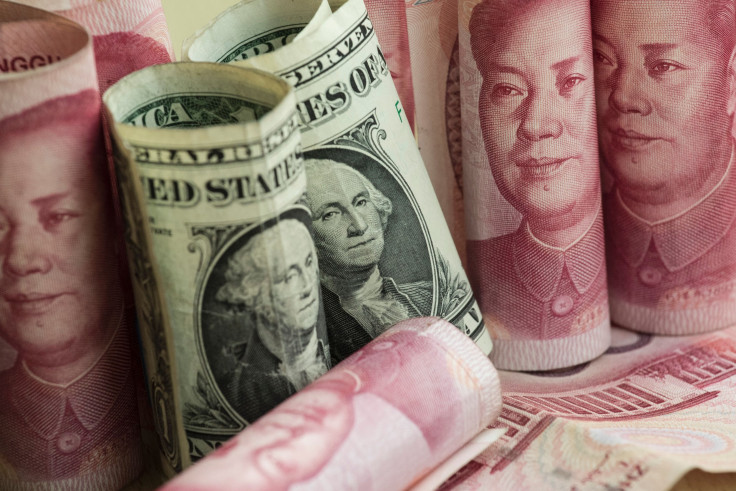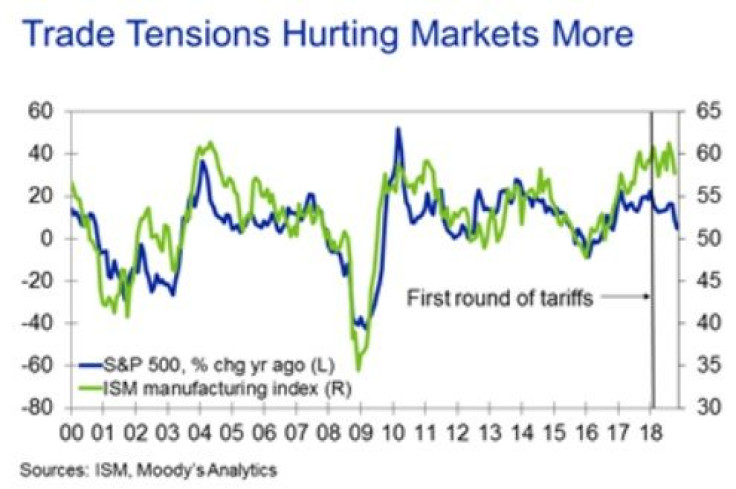China-US Trade War Will Not Escalate, Good For Financial Markets

The truce between the U.S. and China is positive for financial markets but unlikely to have any impact on the U.S. economy, analysts said. Ryan Sweet, director of real-time economics at Moody's Analytics, and Yung-Yu Ma, Chief Investment Strategist at BMO Wealth Management, told International Business Times that they do not see a further escalation of the trade war, but expect a deal only by mid-2019. Still, they believe Trump is not going to get everything he wants from China, and getting China to play fairly will have to wait for another day and another approach.
A recent IBT poll had forecast that a trade deal is not expected in the next six months.
The pause, after the U.S. President Donald Trump and his Chinese counterpart Xi Jinping met on the sidelines of the G20 summit in Buenos Aires, was well received by markets, with the S&P 500 having its best start to December in eight years on Dec. 3.
The White House said in a statement Sunday that Beijing agreed to buy agricultural, energy, industrial and other products. Also, reports said Unipec, the trading arm of China’s Sinopec, is planning to resume oil shipments from the U.S. by March.
Q: What are your thoughts on the recent developments on U.S.-Sino trade at the G20 Summit?
A: Ryan Sweet -- President Trump and Chinese President Xi Jinping on Saturday agreed to halt new tariffs, and we believe the implications are more significant for financial markets than for the U.S. economy.
Some details first - the U.S. will refrain from raising existing tariffs on $200 billion of Chinese goods from 10 percent to 25 percent on January 1 as previously planned. After 90 days, if there's no progress on a broader trade deal or reforms, the U.S. will raise those tariffs to 25 percent.
The truce on tariff increases the odds of a deal, but there is a long way to go, and some issues will be more difficult to address than others. The Trump administration provided Chinese officials with a broad set of demands earlier this year. The detailed list of 142 items has been reported but not publicly released. Still, it appears that the primary focus is on intellectual property and technology transfer. The U.S. Trade Representative claimed that ownership restrictions, licensing requirements, acquisition of U.S. cutting-edge technology and cyber theft put U.S. industries at a disadvantage. Other areas of focus include market access, subsidies and reducing the trade deficit.
We don’t believe all of these points will need to be addressed within 90 days, but some progress likely is needed to prevent the U.S. from raising the tariff rate. For now, we expect no significant changes to our baseline forecast stemming from the new agreement. The drag on GDP and employment growth from the trade tensions has been minimal, so far. We see the truce as removing, potentially temporarily, the upside risk to our forecast for consumer prices in early 2019. The boost to growth in consumer prices is now likely less than 0.1 of a percentage point compared with the 0.2 percentage-point boost that would have occurred if the tariff rate on $200 billion were raised in January and additional tariffs were implemented on other Chinese goods.
Rather, financial markets will likely benefit most from the agreement. It's difficult to tease out the precise impact of the trade tensions between the U.S. and China on U.S. equity markets. However, there is a solid correlation between year-over-year growth in the S&P 500 and the ISM manufacturing index. Since the first round of tariffs under the Trump administration was implemented in January, growth in the S&P 500 has been weaker than implied by the ISM index. It will be interesting to see whether this narrows some because of the truce, but it will likely remain wide until the trade issues are resolved.

A: Yung-Yu Ma - The postponement of tariffs increases is good in that negotiations look set to accelerate, and after a prolonged period of inactive negotiations only so much can come out of a dinner meeting.
Q: Is it likely that a deal is reached between the two countries when they restart discussion after the agreed 90-day period?
A: Sweet - It will be very difficult to reach an agreement that addresses all of the Trump administration’s issues they have identified. A partial deal is possible, therefore our working assumption is that there will not be any further escalation in the trade tensions between the U.S. and China but these negotiations will take time and ultimately some of the issues the Trump administration has identified won’t be addressed.
A: Yung - After the 90-day period, the best we can realistically hope for is a partial deal along with another 3-month postponement of tariff increases while the harder parts of the deal get negotiated. The 90-day period may be to keep the pressure on China, but it’s a short enough timeline that the markets are skeptical that we’ll achieve resolution by then. The 90 days is also close enough on the horizon that it will remain a dark cloud over the markets.
Q: Many analysts saw the U.S., Mexico and Canada (USMCA) deal as “just a victory Trump could claim.” Do you see a similar deal with China?
A. Sweet - Many of the trade agreements of the Trump Administration have been more symbolic than substantive. If Trump follows the script (that) we expect -- no further escalation in the trade war and a deal with the Chinese sometime mid-next year -- then our outlook for the U.S. economy will not change appreciably. This is largely what we have been assuming all along in our baseline outlook. That is, when push comes to shove, Trump would agree to a face-saving, largely inconsequential, trade deal with the Chinese. Getting China to play fairly in the global economy will have to wait for another day and another approach.
A. Yung - President Trump is not going to get 100 percent of what he hopes to achieve with a China trade deal. If markets continue to be rattled by the tariff concerns and these concerns also weigh on global growth, then President Trump may have to choose between his ideological stance and his survival instinct as the presidential election starts coming into focus. It’s likely his survival instinct will dominate and he’ll be inclined to cut a deal and achieve a win, but there’s still a chance he could choose confrontation with China as a strategy.
Q: Is China likely to do more to support its economy? Your views on the overall health of the Chinese economy?
Ryan Sweet did not provide any comments to this question.
A. Yung - China’s recent tax cuts are just kicking in, so it’s unlikely that China needs more stimulus to manage its growth slowdown unless tariffs escalate further. Business sentiment will be dampened until the trade issues with the U.S. are resolved favorably, so if additional stimulus is warranted China has low borrowing cost and can act quickly. Consumer spending and housing in China have been weakening, so accelerated declines in either of those areas could prompt more government stimulus. China’s fiscal and monetary policy will be responsive to its economy, but there could still be a couple of quarters gap between when a slowdown became apparent and the effects of policy response kicked in. The imbalances in China’s economy are large, but so are the resources to deal with them.
© Copyright IBTimes 2024. All rights reserved.











